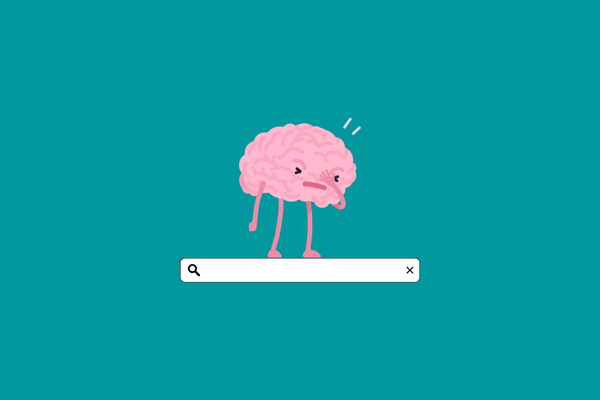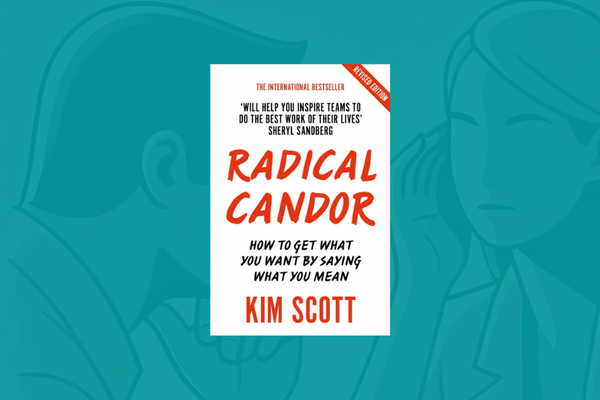The Six Pillars of Self Esteem by Nathaniel Branden - Summary and Notes

Have you ever felt that you are not enough? That you are an imposter who just pretends to understand what he’s doing? Whether we’re talking about sports, our job, or assembling a tent, I’m sure we’ve all experienced that feeling. In most cases, the phenomenon is not the reality, but the image of ourselves in our heads.
Psychologist Nathaniel Branden wrote the book in exhaustive detail, partly addressing the above issues and partly targeting our inner struggles.
The book The 6 Pillars of Self-Esteem has had a great impact on me, so I find it worth thinking further about the findings, advice, and practices it contains.
If you’ve ever felt insecure and felt awful about it, stick with me to get to know the practical wisdom the book can offer!

What is self-esteem?
Self-esteem means confidence in our abilities. Self-esteem is a basic human need. It means confidence that we will think, stand our ground and succeed. Self-esteem is more than emotion as it is strongly related to motivation.
Our actions affect our self-esteem, and our self-esteem greatly affects our actions, so we live in an eternal cycle. If what and how we do is important to us, then self-esteem must also be central to our thoughts.
Criteria for healthy self-esteem
- rationality
- creativity
- flexibility
- interoperability
Signs/effects of low self-esteem
- the desire for excessive control
- fear
Feelings
Self-esteem is strongly related not only to our thoughts and actions but also to our emotions. A person with low self-esteem can’t be truly happy because he constantly feels he doesn’t deserve it.
Lack of self-esteem is often coupled with a lack of love, according to the author, because we need all the self-love to be able to love others sincerely.
Too much self-esteem
Self-esteem creates expectations. When we have healthy self-esteem, there is an image in our minds of ourselves, of what we are and what we want to be.
We have to strive for the optimum from many qualities, too much of our virtue can backfire (e.g., overconfidence), but self-esteem is not like that.
There is no such thing as too much self-esteem, just as there is no too strong immune system. There is little and enough self-esteem.
If someone doesn’t have enough self-esteem, nothing seems right for him. You always want another promotion, another car, a bigger house.
The information economy, which quickly gained ground in the United States, created new demands for psychological innovation. Consumer society and greater freedom than ever before have placed a huge burden on people.
In today’s world, there is no true path ahead of us, which is why self-esteem is important.
Types of self-esteem
1. Belief in our abilities
An essential element of self-esteem is that we need to believe in the judgment, abilities, and decisions of our minds. We need to believe that we can learn all that is needed to succeed when we know that success is far from certain.
Belief in our abilities means giving our best form and trusting that this will be enough as the other factors are already independent of us.
2. Self-esteem
Self-esteem is not necessarily related to our decisions and abilities.
The self-conscious person sees joy and fulfillment as his birthright. Self-esteem is the confidence that we deserve the respect and esteem of others.
What does self-esteem look like?
Self-esteem manifests itself in countless ways:
- in the way you talk
- in talking about the results achieved
- in openness to criticism
- in curiosity about learning about the new
- flexibility in dealing with unexpected events
- at rest in a stressful situation
There are also visible signs of a lack of self-esteem:
- fear guides our actions
- we want to avoid pain rather than experience happiness
Pseudo-self-esteem
Self-esteem is a valuable trait.
Many people know this and want to look confident, even if they are not, so form a pseudo-self-esteem.
Popularity, the accumulation of material, and the manipulation of other people all try to cover up a lack of self-esteem by building a false image.
What do we need to do to increase self-esteem?
Speaking of an inner trait, self-esteem depends on what we think of ourselves, and all of this is influenced by our actions, so we can consciously increase our self-esteem.
Acknowledging the existence of awareness, self-esteem, can already help this process. A supportive environment is also critical.
However, building self-esteem is not an overnight success: we need to think in small steps.
The 6 Pillars of Self-Esteem:
- The practice of living consciously
- The practice of self-acceptance
- The practice of self-responsibility
- The practice of self-assertiveness
- The practice of living purposefully
- The practice of personal integrity

1. The practice of living consciously
Our mind is our basic means of survival, yet we are not equal to our abilities and intelligence. Consciousness does not focus on ability but action.
You don’t just have to think, awareness has to show in deeds.
Consciousness presupposes that we can learn from our own emotions as well.
Awareness requires an active mind, which manifests itself in the following cases:
- the enjoyment of the moment, the role of presence
- distinguishing between facts, opinions, and emotions
- the need for feedback
- noticing and correcting our errors
- knowledge of our true values
One of the powerful tools for exercising awareness is to ask frequent and appropriate questions:
- If I do this, what will happen?
Sentence completion exercises
All six pillars were accompanied by sentence-supplementing exercises by the psychologist author, who wanted to shed light on and make us aware of the connections deeply hidden within us.
The essence of sentence-supplementing exercises is that each basic pillar has unfinished sentences that need to be completed in at least six ways.
The exercises need to be done quickly, viscerally.
Each pillar can take a maximum of 5 minutes per day and this needs to be continued for a week for proper results.
For awareness, Nathanial Branden suggests supplementing the following sentences:
- Consciously living for me means that…
- If I am more conscious of people, then…
- If I bring 5% more awareness into my most important relationships, then…
Sentence-completing exercises may be appropriate tools for developing self-esteem precisely because of awareness. We tend to run through a book, listen to advice, get a little motivational boost from them, and then throw it all out the window.
Don’t do this with the practices in the book, as the desired effect is not caused by reading, but by applying what you read to your own lives.
In the summary, I will try to share some of the exercises in the book, but if you are interested in these exercises in more detail, I would recommend reading the book.
2. The practice of self-acceptance
For self-acceptance, we need to be aware: we exist for ourselves and we are responsible for ourselves. Accepting ourselves is possible when we accept our emotions, are aware of our thoughts, but do not allow them to guide us.
Self-affirmation should be included in the toolbox of a person with healthy self-esteem.
We talk about self-affirmation in the following cases:
- we stand up for ourselves
- we are aware of our thoughts, even if they are negative
In addition to the usual sentence-completing practice, Nathanial Branden suggests another exercise.
As a practice of self-acceptance, look in a mirror, focus on yourself, and repeat aloud:
- I fully accept myself!
To accept is not to be liked. We can accept ourselves with our mistakes and if we do, we will be even more motivated to change.
Acceptance is the first step to change.
Sentence completion exercises
- For me, self-acceptance means that…
- If I were more accepting of my thoughts on…, then…
3. The practice of taking responsibility
When discussing responsibility, it is important to make it clear that it is not always necessary. If we have no control over a thing or event, we cannot substantially influence it, we should not take responsibility for it. Taking responsibility awakens security in others, so don’t be so cruel as to promise them false promises.
We also need to make ourselves aware of the other extreme.
If one thing depends only on us, we must take full responsibility for it and accept that no one will rush to our aid if we screw it up.
Sentence completion exercises
- For me, taking responsibility means that…
- When I avoid responsibility,…
4. The practice of self-assertiveness
- Stand up for yourself!
- Be real and original!
- Ask! Question everything!
- Believe that your ideas and results are important!
According to the author, if you don’t take these simple steps, chances are you’re just an insignificant supporting character in someone else's story.
If we accept Nathaniel Branden's proposal, we cannot respect anyone too much.
Confidence also involves a little cheekiness.
5. The practice of living purposefully
What is the opposite of living purposefully?
Living without a purpose, allowing dumb luck to influence our life. This is what the author wants to talk about.
According to him, being without a goal results in a reactive life. If you don’t have goals, you can’t even achieve them. What will you call success?
Ask yourself the question: What do you want to achieve?
Now, don’t think of childish dreams, but of realistic yet seemingly big enough goals.
Think! Plan! Do this in the long run!
Follow these steps to increase your awareness:
- Take responsibility for setting your own goals!
- Recognize what steps you need to take to reach your goal!
- Keep an eye on your behavior to see if it is in line with your goals!
- Pay attention to the consequences of your actions! How do they affect the achievement of your goals?
Setting goals is important, but you shouldn’t stop here.
If you don’t do anything, nothing will happen.

6. The practice of personal integrity
Personal integrity essentially means loyalty to our values.
The more we live our lives according to the principles we set, the more self-esteem we will have.
Personal integrity is really affected by everyday small actions. How do we cope with the challenges?
It may be easier to choose the less bumpy path today, but if it conflicts with our values, it may not be such a good decision for our self-esteem.
External factors influencing self-esteem
The 6 pillars of self-esteem try to influence our own thinking, however, no matter how conscious we are, we are always affected by others as social beings.
The book also addresses the impact of our environment on self-esteem.
Parents
Children’s self-esteem can be easily shaped, which is why parents have such an important role. It is unbelievable how important parents are for the healthy development of their child’s personality, for the development of their proper self-esteem.
According to Nathaniel Branden, the most important rule for parents is that love should not be tied to performance. This creates constant unhealthy expectations, for which if the child is unable to grow up, he feels like he loses the ground under his feet.
In sports, love is often associated with performance.
Just because a parent was athletic, maybe good in some sport, doesn’t automatically mean that kids will be either. All this must be accepted in favor of kids to grow up healthily.
Praise also plays a huge role in shaping self-esteem.
There are several ways to encourage a child to pack books in the library:
- Bad example: You did a great job!
- A good example: Books are now in place, making it easier for kids to find their favorite book. Thanks!
Exercising proper criticism is also essential in developing self-esteem. If we violate someone’s self-esteem with criticism, we are more likely to see the unwanted behavior at other times.
Teachers
After parents, teachers have the biggest impact on children. Nathaniel Branden also highlights the role of teachers and the risks of their work. In his opinion, many teachers themselves struggle with self-esteem problems and many are not prepared for a teaching career, which can have a negative impact on children.
Every child has something valuable.
It is the job of teachers to find this, not to constantly remind children of what they are untalented in.
According to the author, a teacher can only be successful in developing his students ’self-esteem if he has it himself.
Employees - Companies
It has been proven that employees with higher self-esteem perform better, so companies also have an interest in creating an environment that supports creativity and innovation, helping employees to fulfill themselves.
In an environment that supports self-esteem, people:
- feel recognized
- receive constructive criticism
- their ideas get supported
- have access to information
- their learning is encouraged
Leader, CEO, President
If someone wants to create something bigger than himself, he has to surround himself with people better than himself.
If a CEO wants a successful company, he needs to employ smarter, more qualified people, better professionals than himself.
To do this, a leader needs healthy self-esteem. If you treat these people with due respect, they will approach it and respect will become an organizational culture.
Steps of building self-esteem
1. Laziness
We feel a strong urge to avoid any action that moves us out of our comfort zone. If we stay at this level, it will ruin our self-esteem and our life.
2. Small steps
Even a little progress can increase our self-esteem. If you want to hit the gym, it helps to put on your running shoes first.
3. Bigger tasks
With the help of the small steps, we have already come down to training. We are still scared, but we are already there and moving towards our goal.
4. Complex tasks
With the help of the previous steps, we have gained enough confidence to besiege the bigger challenges as well.
Thoughts on The 6 pillars of Self-Esteem
The massive research behind the 6 pillars of self-esteem are visible. The book is well structured and has a lot to say.
With the sentence-supplementing exercises, I think Nathaniel Branden went a little bit too extreme. He added too many and not necessarily useful exercises (at least for me) to the otherwise enjoyable chapters.
In some places, Branden explains things that are obvious. The description of the six basic laws is downright exciting, but the second part of the book was forgettable to me.
There are few such well-compiled, research-supported books on self-esteem, inner values, and struggles written by a professional (psychologist).
I recommend Nathanial Branden’s book - The 6 Pillars of Self-Esteem to everyone.




